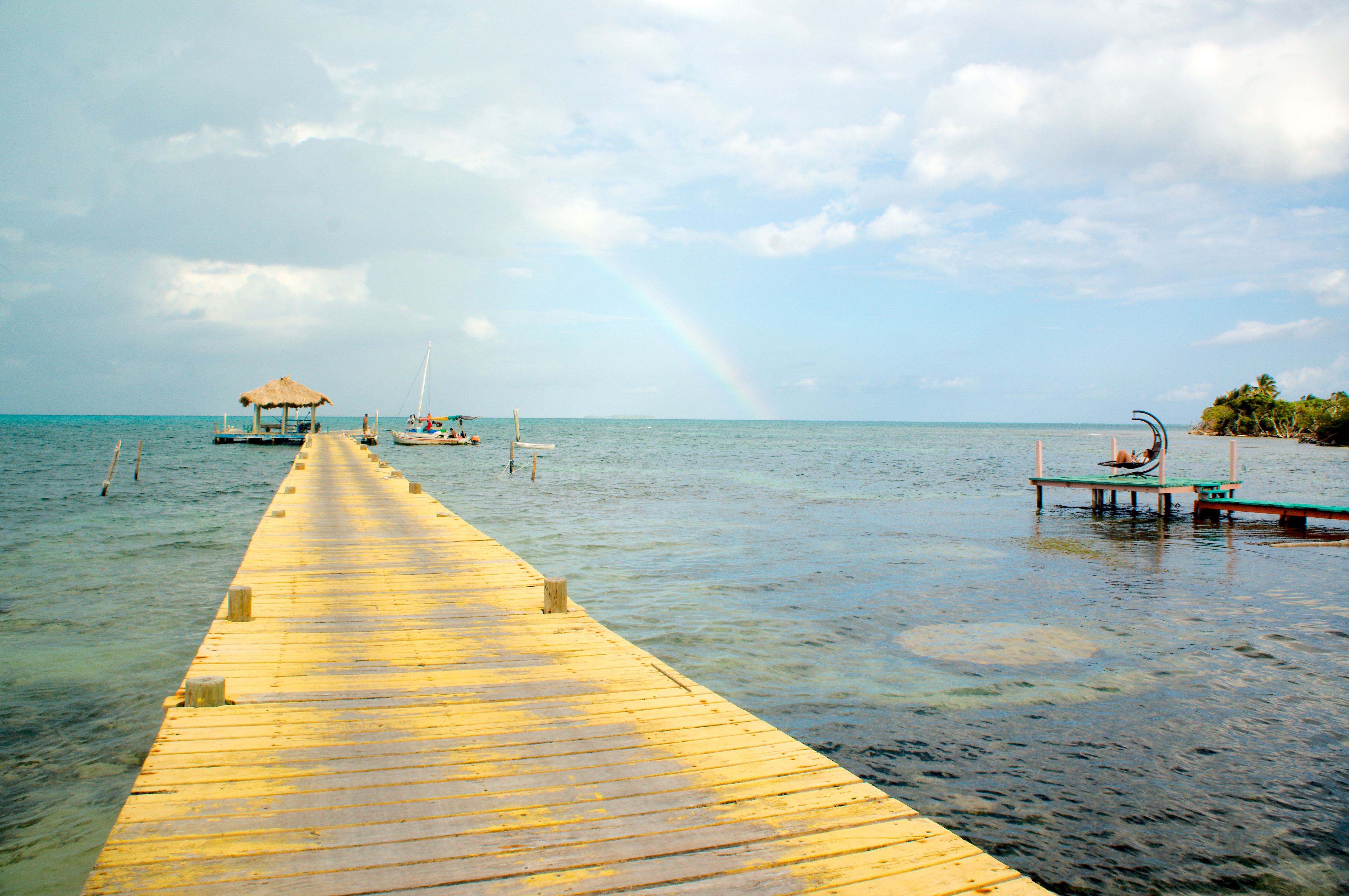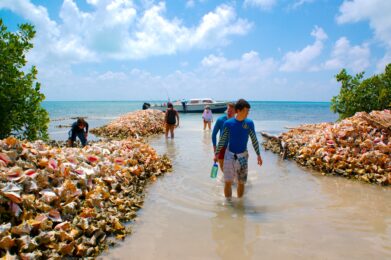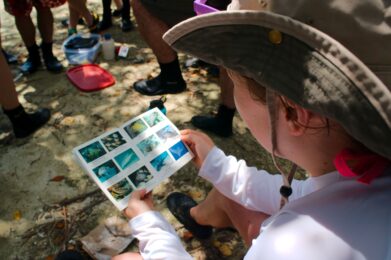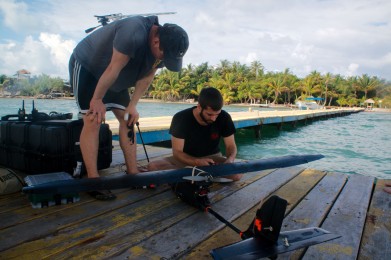
Victoria Erb stood in the back of the boat with her classmates and watched three sharks cut through the crystal clear water of Belize’s Great Blue Hole.
The senior biology major then did the one thing the vast majority of people in this situation absolutely would not do.
She dove in.
Assisted by funding from Wake Forest’s biology department, the Center for Energy, Environment and Sustainability (CEES), and the Center for Global Programs and Studies, Erb and 14 of her peers traveled to Belize’s Lighthouse Reef Atoll, part of Belize’s Barrier Reef, to study an estimated 500 species of reef fishes and 86 species of soft and hard corals.
The Blue Hole was one of many stops the students, currently taking the Ecology and Conservation of Coral Reefs class, made during the spring break trip.
Unparalleled biodiversity
CEES scientists conduct research at Lighthouse Reef Atoll on how human activities influence the function of marine ecosystems on a local-to-global scale.
Erb and her classmates helped to monitor the diversity and abundance of fish species located in marine protected areas such as Half Moon Caye, a tropical island sanctuary declared a UNESCO world heritage site in 1996.
“The big idea behind marine protected areas is that if you quarantine a section of reef, the fish will be able to reproduce more successfully,” said Benjamin Perlman, a biology Ph.D. candidate at Wake Forest. “These protected areas can then seed adjacent unprotected areas with healthy future generations of grouper, snapper, barracuda and other fish that people like to eat.”
A peculiar fish out of water
Perlman’s Ph.D. dissertation is on a peculiar species of fish called the mangrove rivulus that makes its home in the mangrove swamps that dot the Atoll’s numerous sandy cayes.
Scientists previously discovered the mangrove rivulus could breathe through its skin, enabling it to live on land in a relatively moist environment for up to 66 days. Perlman’s work focuses on how the 3-inch rivulus moves across the ground once its gets there.
He took a group of students through the knee-deep mud of a mangrove swamp on Lighthouse Reef’s Northern Caye to gather rivulus samples for his research.
They managed to collect tissue samples from a single rivulus. Perlman said the plan is to send the sample to a colleague at the University of Alabama who will run DNA tests.
“I’m investigating locomotor performance and how that varies with genetic differences in rivulus populations from different areas,” he said. “We wanted to collect samples from this specific population to see if they have any differences in certain genes that may play a role in enabling them to move across land more effectively than other populations.”
The threat of development
Mangroves are a crucial element of the life history of many of the reef fish species. They serve as a refuge for juvenile fish before they move out on to the reef, where they spend their adult lives, said Miriam Ashley-Ross, an associate professor of biology who teaches the Ecology and Conservation Biology of Coral Reefs course.
And yet, despite their importance as refuges for countless species of fish such as the rivulus, mangrove forests are not typically viewed as valuable and are threatened by development.
Researchers with Wake Forest’s Small Unmanned Aerial Systems (SUAS) Lab used a drone aircraft to create a detailed, three-dimensional model of several of these areas.
“Whether that development will happen we don’t know for sure,” Perlman said. “But it is important to have a baseline of what it looks like now for comparison if it does end up changing.”
For her part, Erb said the spring break trip helped her realize the critical importance of protecting this fragile ecosystem now rather than later.
“The sheer array of biodiversity doesn’t really hit home until you are out in the water taking it all in with your own eyes,” she said. “Helping to monitor the health of the reef now so we can determine the impact of development in the future is so important and was the experience of a lifetime.”
To see more photos from the trip click here.
Categories: 2014 Highlights: Research, Faculty, International, Mentoring, National, Online, Pro Humanitate, Research, Scholars and Scientists, Student, Students Taking the Lead, Teacher-Scholar, Top Stories, Working Together
Headlines
Wake Forest in the News
Wake Forest regularly appears in media outlets around the world.







